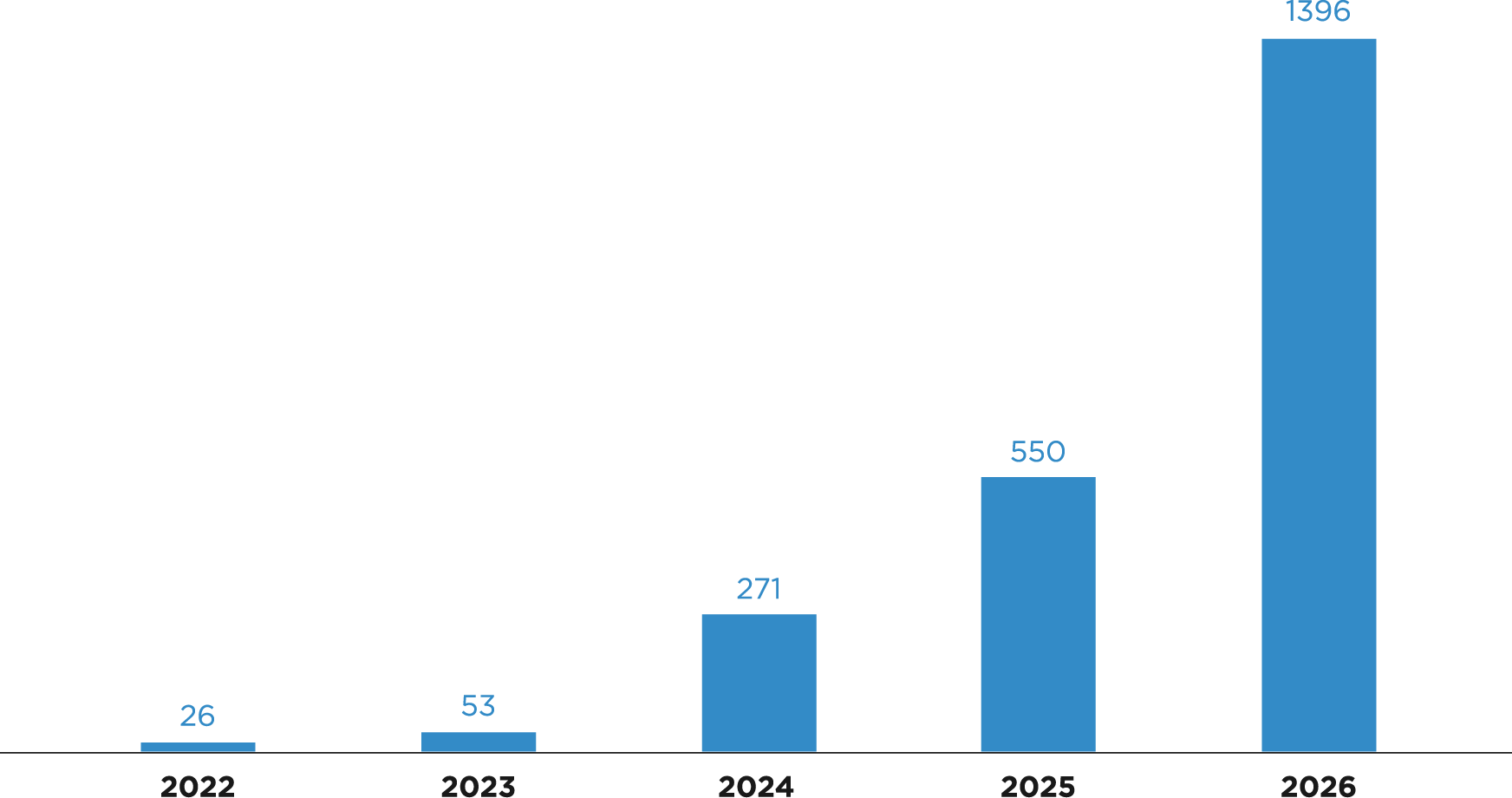Challenges of traditional SMEs Wi-Fi network
In the post-COVID-19 era, SMEs adopt various digital tools (e.g. remote working, online/click and collect selling, cloud, etc.) helped to mitigate the impact of the pandemic. Faster internet benefits SMEs businesses by increasing usage of the cloud and promoting effective collaboration .According to Graphical Research, European Enterprise WLAN Market size is estimated to surpass USD 8 billion (EUR 7,6 billion) by 2027 . Due to budget constraints, these companies deploy Wi-Fi as the most cost-effective and reliable connectivity solution to keep their business continuity. However, SMEs encounter various technical and operational challenges when deploying Wi-Fi solutions:
- Replacing Ethernet cable: Ethernet cable is used to provide an internet connection, to directly connect a Wi-Fi router to the internet entry port or telephone line. Ethernet cables are made of copper. Compare to fiber, the speed on copper may be very limited.
- Inconvenient network O&M : Wi-Fi network status is passively displayed to indicate the health of the network. Wi-Fi networks are difficult to manage, which makes resolving connectivity issues with Wi-Fi networks difficult. Certain Wi-Fi connectivity issues may difficult to be localized and fixed. In some cases, it is necessary to contact the service provider to fix issues on-site. However, relying on on-site repairing service is usually very time-consuming and expensive.
- Costly to upgrade Wi-Fi devices: Wi-Fi standards have been continually evolving. The updates of Wi-Fi standards require upgrading Wi-Fi routers. Wi-Fi 6 (also called 802.11ax) is a new generation of Wi-Fi technology available in 2019 that promises faster throughput, longer battery life, and less bandwidth congestion. However, Wi-Fi 6 devices remain expensive. One Wi-Fi 6 router can easily cost more than 250 euros.
What is FTTR?
FTTR, fiber to the room, extend fiber connection to every room to provide ubiquitous gigabit wireless access. FTTR is the next step of FTTH solution. In FTTR architecture, a master FTTR device is connected by optical fiber to multiple slave FTTR devices placed in different locations. Both FTTR master modem and slave terminals can provide Wi-Fi 6 access so that each corner of house/office can reach gigabit speed access.
FTTR-SME ALL-optical networking solution

Compared to traditional AC+AP solutions based on Ethernet cable, FTTR shows various advantages:
- Enhanced network speed and guaranteed in-door network coverage: by leveraging fiber and Wi-Fi 6 connectivity, FTTR promise to delivery up to gigabit internet speeds to meet SMEs’ various digital application network requirements. The technology also can provide sufficient bandwidth to connect up to 300 IoT terminals online.
- Easy and scalable installation: FTTR adopt point-to-multipoint (P2MP) technology for better scalability in networking capabilities with optical splitting, while reducing fiber optical cable usage by 30%. In addition, the use of highly integrated components, such as the four-in-one FTTR master modem and hybrid cables, simplifies the installation process, enabling plug-and-play operation.
- Efficient Wi-Fi network management: FTTR eliminates the inconveniences of traditional Wi-Fi network management by utilizing a mobile application to monitor the Wi-Fi network in real-time, detect network errors on one-click, and even perform remote network recovery.
FTTR solution helps telco players to increase the competitive advantages
For operators, FTTR will be a robust technology to realize differentiated for its premium quality of network services, and enhance ARPU value of users and reduce churn. Furthermore, the technology is very suitable for various business situations, such as buildings、malls、restaurants and enterprise LAN networking scenarios, which enable operators to extend their service to provide an E2E network, establishing the stickiness with enterprise users.
- Higher ARPU : FTTR has the potential to become a new engine for operators’ home broadband revenue growth. The technology offers users a premiere internet experience with full Wi-Fi coverage, eventually providing higher ARPU benefits. China Telecom charges FTTR users 25% more than the traditional home broadband packages.
- E2E acceleration for key services provides stable low latency and ultimate experience. Business applications, such as sharing file and cloud service, may have different network requirements in term of network speed and latency. FTTR network, enabling to offer gigabit speed and low latency, can guarantee different network quality of service requirement of various business application requirements.
- Low churn : for the traditional Wi-Fi solution, More than half of the complaints are related to insufficient Wi-Fi coverage. FTTR solutions can provide full Wi-Fi coverage, which improves user experience and customer satisfaction.
Higher customer satisfaction tends to lead to improved customer retention and lower churn.
- More efficient O&M : the intelligent O&M system enables monitoring Wi-Fi connection status in real-time, detect connection problems easily through one click, and remote recovery of the issues.
Deployment of FTTR in different situations requires distinct approaches
FTTR has already been launched commercially by 65 provincial operators in China. Some other operators around the world are in trialing phase such as Etisalat in the United Arab Emirates. By the end of 2021, the number of subscribers reached 200k and is expected to reach 16 million by the end of 2026.
FTTR deployment requires a well-designed process in advance. The deployment approach will be different for the green field building and the brownfield building. In a greenfield situation, the fiber network will be installed at the same time as the buildings. Operators need to negotiate with building owners regarding the installations of fiber in each brownfield building; operators must consider how to facilitate fiber deployment in each room of one building.
European Union FTTR SMEs deployments (thousands)


